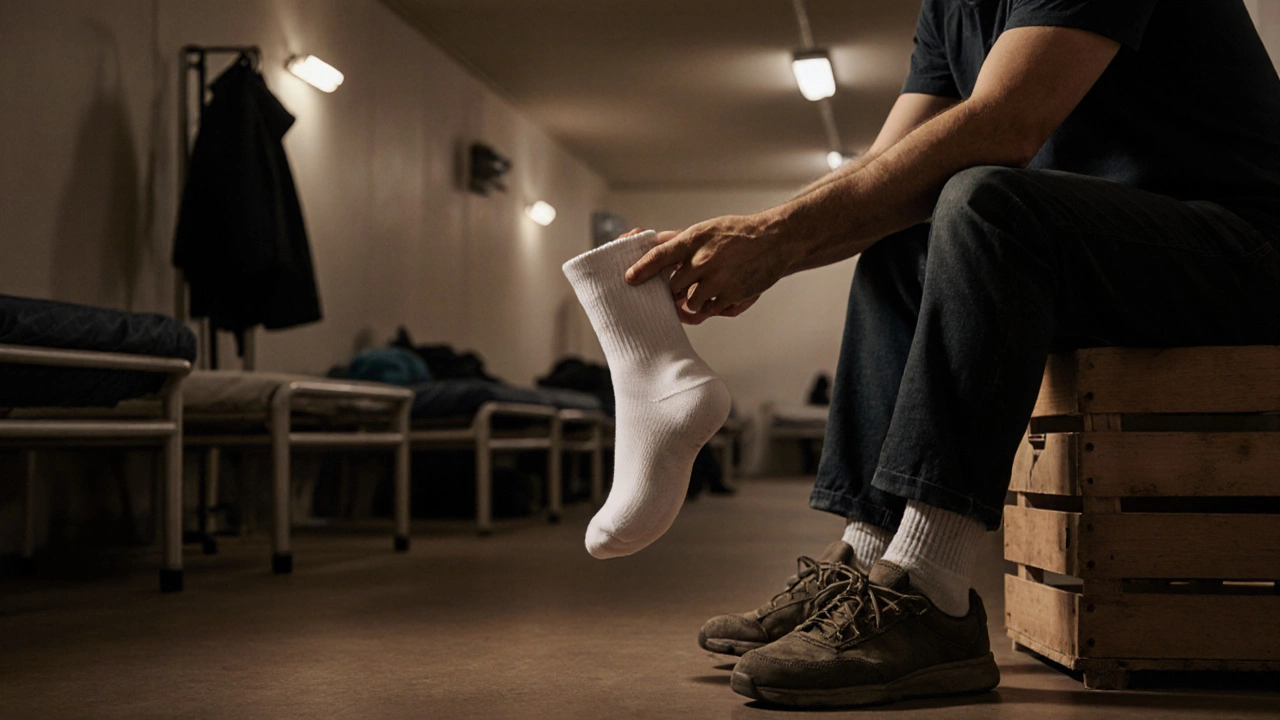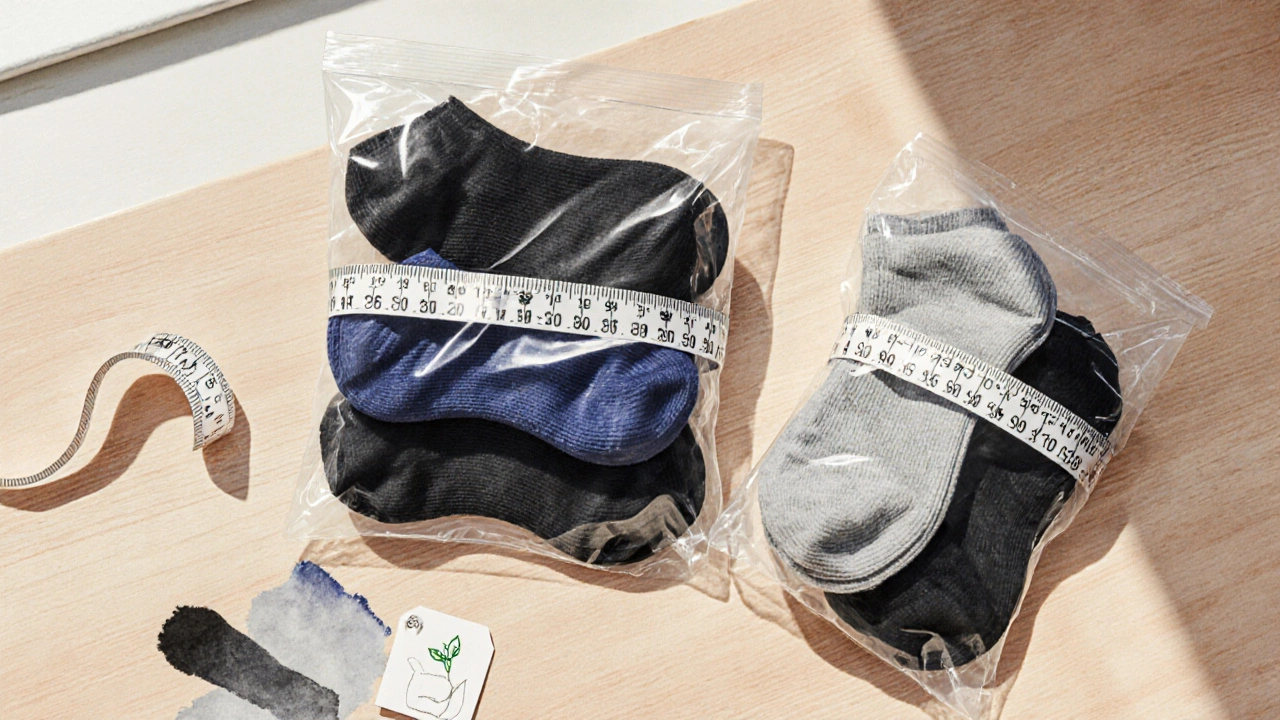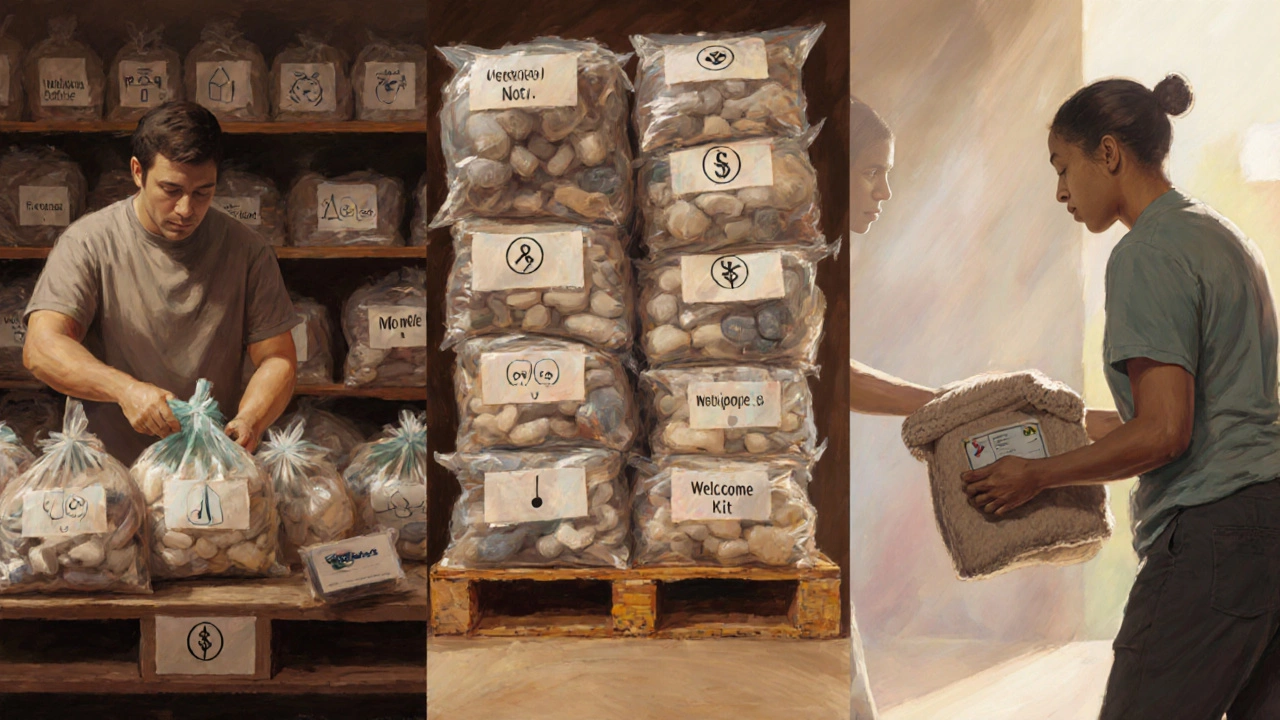Most Requested Item by Homeless People - What They Need Most
 Oct, 24 2025
Oct, 24 2025
Socks Donation Impact Calculator
How Your Donation Helps
Based on Australian shelter data: $3-$4 provides 5 pairs of socks, helping 1 person for a week. Your donation directly improves foot health, prevents infections, and gives dignity.
When you hear the question “what is the most requested item by homeless people?”, the answer that keeps showing up in surveys across Australian shelters is Socks - a basic cotton or wool garment that keeps feet warm, dry and reduces the risk of infection. It might sound simple, but the impact of a good pair of socks is huge - it can mean the difference between a comfortable night on a cold floor and a painful day dealing with blisters or trench foot.
Why Socks Top the List
Foot health is a silent crisis in homelessness. According to a 2024 report from the Victorian Homelessness Council, more than 60% of people staying in temporary accommodation reported foot problems, and over half of those said a lack of clean socks was the main trigger. Shelters hand out a limited stock of disposable slippers, but those wear out quickly in wet or icy conditions. A fresh pair of cotton socks provides a breathable barrier that helps keep feet dry, lowers the chance of fungal infections, and gives a bit of dignity when someone is forced to wear the same shoes for days on end.
Beyond health, socks are a low‑cost, high‑impact donation. A bulk pack of five adult cotton socks costs around $3-$4, meaning a $100 donation can supply 20-25 people with fresh footwear. That’s a far better return on investment than many larger items that sit untouched because shelters lack storage space or specific sizing.
What the Data Says
Multiple Australian charities have compiled lists of the most‑asked‑for items. The following table summarises the top five items collected from 2023‑2025 surveys conducted by the Melbourne City Mission, St. Vincent de Paul Society, and the Salvation Army.
| Item | Why It’s Needed | Typical Donation Size |
|---|---|---|
| Socks | Prevents foot injuries, keeps warmth, easy to store | 5‑pair packs (USD 3‑4 each) |
| Hygiene kits | Includes soap, shampoo, toothbrush, reduces illness | 1‑kit (USD 6‑8 each) |
| Blankets | Provides warmth during cold nights, easy to fold | 1‑blanket (USD 12‑15 each) |
| Non‑perishable food | Ensures steady calories, long shelf‑life | 10‑kg box (USD 20‑25 each) |
| Water bottles | Hydration on the go, reduces reliance on public fountains | Reusable 1‑L bottle (USD 3 each) |
How to Choose the Right Socks
Not every pair of socks will do the trick. Shelters have learned a few hard‑won rules about what works best:
- Material: Pure cotton or a cotton‑poly blend breathes well and absorbs moisture. Wool is great for winter but can be pricey.
- Fit: Unisex, medium‑size socks (roughly 9‑11 inches tall) cover most adults. Avoid novelty prints that may not suit all tastes.
- Durability: Look for reinforced heels and toes. Double‑stitched seams last longer in rough conditions.
- Packaging: Socks should be clean, individually wrapped or in sealed plastic bags to keep them hygienic.
When you’re buying in bulk, ask the supplier if they can sort the packs by size. Some shelters have a small demand for children’s socks, but the overwhelming majority are adult sizes.
Other High‑Demand Items (And How They Complement Socks)
While socks lead the list, shelters also frequently request a handful of other essentials. Below is a quick rundown of each item, why it matters, and how it works together with fresh socks to improve overall wellbeing.
- Hygiene kits - bundles containing soap, shampoo, toothbrush, and toothpaste that help prevent skin infections and maintain personal dignity.
- Blankets - heavy‑weight fleece or wool throws that keep bodies warm when shelter heating fails or during outdoor nights.
- Non‑perishable food - canned beans, pasta, rice, and granola bars that supply calories without refrigeration.
- Water bottles - sturdy 1‑liter reusable bottles that reduce reliance on public drinking fountains and cut plastic waste.
- Insoles - gel or foam inserts that cushion feet, especially helpful for those who must walk long distances barefoot or in worn shoes.
These items together create a basic survival kit: clean socks protect the feet, a hygiene kit prevents skin disease, blankets keep the body temperature stable, food and water supply energy, and insoles add extra comfort for the long walks many homeless people endure.

Common Donation Pitfalls (And How to Avoid Them)
Even with the best intentions, donors sometimes miss the mark. Here are a few mistakes you’ll see and quick fixes:
- Donating worn or stained items. Shelters cannot redistribute soiled goods. Always check that socks are brand‑new and free of holes.
- Sending novelty or seasonal socks. Bright holiday patterns may be fun, but they can quickly become outdated or clash with most clothing. Stick to neutral colours like black, navy, or grey.
- Bulk packs without size information. One‑size‑fits‑all rarely works. If you can’t sort by size, label the pack as “medium” and let the shelter redistribute as needed.
- Over‑packing. Shelters have limited storage space. A single pallet of socks can fill a room and block access to other supplies. Aim for manageable batches (e.g., 10‑packs per box).
When you’re unsure, reach out to the shelter’s donation coordinator. A brief email or phone call can save you time and ensure the donation lands where it’s most needed.
How Shelters Turn Donations Into Impact
Understanding the flow from your donation to a person on the street can be reassuring. Here’s a typical process:
- Receipt and inspection. Volunteers check each item for cleanliness and condition.
- Sorting. Items are grouped by type - socks, blankets, food, etc. - and then further sorted by size or age‑group where relevant.
- Storage. Shelters keep a small “quick‑access” area for high‑turnover items like socks. Rest go into longer‑term storage.
- Distribution. When a resident checks in, staff hand out a “welcome pack” that includes a pair of socks, a hygiene kit, and basic clothing if needed.
- Feedback loop. Shelters track which items run out fastest and communicate that back to donors, refining future donation drives.
This loop shows why a simple, inexpensive item like socks can have a ripple effect: it improves health, boosts morale, and frees up staff time that would otherwise be spent on emergency medical care.
Quick Checklist for Donors
- Buy new, cotton or cotton‑poly blend socks.
- Avoid novelty designs; stick to neutral colours.
- Package in sealed bags to keep them hygienic.
- Prefer medium sizes (9‑11 inches) - most shelters request this.
- Contact the shelter first to confirm current needs.
- Consider bundling socks with a small hygiene kit for extra impact.
Follow this list and you’ll be confident that your contribution hits the sweet spot of what homeless people are asking for right now.
Why are socks more requested than blankets?
Blankets are essential, but they’re heavier, take up more storage space and are harder to distribute quickly. Socks are lightweight, cheap, and directly address a health issue that most shelters see daily - foot infections.

Can I donate used socks?
No. Shelters require brand‑new socks to keep hygiene standards. Used socks can spread fungal infections and are usually turned away.
How many pairs should I send?
A standard donation box of 20‑25 pairs is a sweet spot - enough to keep a small shelter stocked for a week, but still manageable to transport.
Where can I drop off my socks in Melbourne?
Major drop‑off points include the Melbourne City Mission centre on Lonsdale Street, St. Vincent de Paul’s Fairfield House, and the Salvation Army’s East Melbourne depot. Check each site’s opening hours before you go.
What other items should I consider donating alongside socks?
Hygiene kits, insulated blankets, non‑perishable food, reusable water bottles, and gel insoles are the next most requested items. Pairing socks with any of these creates a stronger support package.